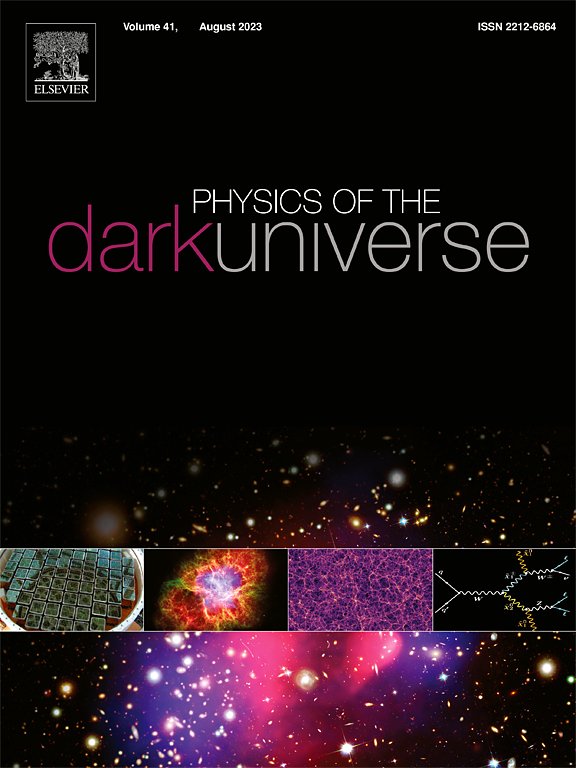f(R,T)引力理论中黑洞的强透镜效应和准正态振荡模式
IF 6.4
2区 物理与天体物理
Q1 ASTRONOMY & ASTROPHYSICS
引用次数: 0
摘要
本文采用理论的最小耦合模型,分析了f(R,T)引力框架下被流体包围的黑洞的强透镜现象和准正态模态(QNMs)。我们对三个周围场进行了分析,这些场对应于状态方程参数ω的三个不同值,每个值代表一个唯一的BH解类。采用V. Bozza开发的通用方法进行强透镜分析,并采用WKB近似方法计算黑洞振荡的QNMs。分析了模型参数β和c2对偏转角和相关透镜系数的影响。我们在透镜效应方面的研究结果表明,较小的β和c2值会在较大的冲击参数下引起光子发散,并且透镜效应的结果收敛于史瓦西极限。将分析扩展到超大质量黑洞Sgr A*,我们检查了最外层的爱因斯坦环,估计了三个透镜观测值:黑洞的角位置,角间距s和相对放大率。对于特定的β和c2值,具有不同场构型的黑洞在其可观测性质上表现出很大的变化。分析了QNMs的振幅和阻尼随模型参数β和c2的变化规律。我们发现β参数与QNMs的振幅成正相关,与阻尼成反比,而c2参数与振幅和阻尼成正相关。进一步,我们使用时域分析对结果进行验证,发现两种方法之间有很好的匹配。本文章由计算机程序翻译,如有差异,请以英文原文为准。
Strong lensing effect and quasinormal modes of oscillations of black holes in f(R,T) gravity theory
In this work, we analyze the strong lensing phenomenon and quasinormal modes (QNMs) in the case of black holes (BHs) surrounded by fluids within the framework of gravity, adopting a minimally coupled model of the theory. Our analysis is conducted for three surrounding fields corresponding to three different values of the parameter of the equations of state, each representing a unique class of BH solutions. A universal method developed by V. Bozza is employed for strong lensing analysis and the WKB approximation method to compute the QNMs of oscillation of the BHs. The influences of the model parameters and on the deflection angle and associated lensing coefficients are analyzed. Our findings on lensing reveal that smaller values of and cause photon divergence at larger impact parameters as well as the lensing results converge to the Schwarzschild limit. Extending the analysis to the supermassive BH Sgr A*, we examine the outermost Einstein rings, estimate three lensing observables: angular position , angular separation and relative magnification for the BHs. For a specific values of and , BHs with different field configurations exhibit substantial variations in their observable properties. The variation of amplitude and damping of QNMs with respect to the model parameter and is analyzed for the BHs. We found that the parameter has a direct correlation with the amplitude and an inverse relation with the damping of the QNMs, while has direct correlation with amplitude as well as damping. Further, we use the time domain analysis to verify the results and found a good match between the two methods.
求助全文
通过发布文献求助,成功后即可免费获取论文全文。
去求助
来源期刊

Physics of the Dark Universe
ASTRONOMY & ASTROPHYSICS-
CiteScore
9.60
自引率
7.30%
发文量
118
审稿时长
61 days
期刊介绍:
Physics of the Dark Universe is an innovative online-only journal that offers rapid publication of peer-reviewed, original research articles considered of high scientific impact.
The journal is focused on the understanding of Dark Matter, Dark Energy, Early Universe, gravitational waves and neutrinos, covering all theoretical, experimental and phenomenological aspects.
 求助内容:
求助内容: 应助结果提醒方式:
应助结果提醒方式:


